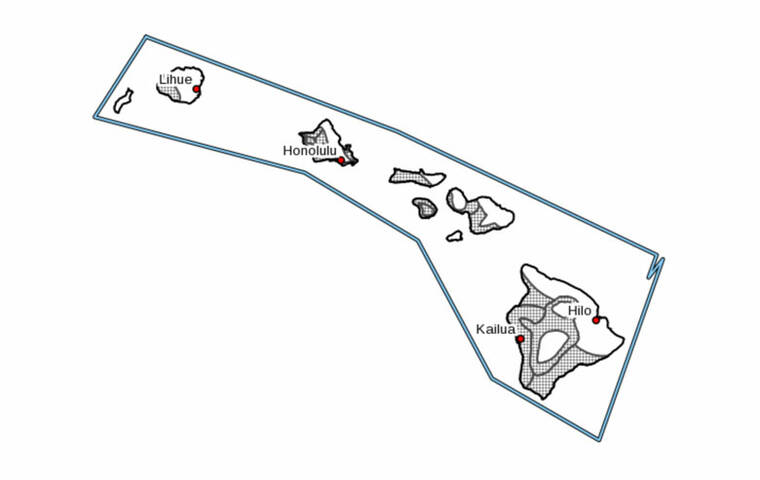Fire weather watch issued for leeward Hawaii on Wednesday

COURTESY NATIONAL WEATHER SERVICE
Weather officials say trades of 15 to 30 mph, with gusts of 40 to 45 mph, are expected for the leeward areas of all Hawaiian Islands.
The National Weather Service has issued a fire weather watch for the leeward side of all Hawaiian isles, effective from Wednesday afternoon through Thursday afternoon.
Weather officials say trades of 15 to 30 mph, with gusts of 40 to 45 mph, are expected during that timeframe. The strongest wind gusts will be downward of the terrain.
The gusty winds, combined with dry fuels and lowering humidity rates could produce critical fire weather conditions Wednesday afternoon through Thursday afternoon.
Forecasters expect minimum humidity rates of 45% to 50% Wednesday to lower to 35% to 45% Thursday, meaning fires that develop will likely spread rapidly. Outdoor burning is not recommended.
A fire weather watch means that critical fire weather conditions are forecast to occur, NWS said, and that the public should stay tuned for later forecasts and possible red flag warnings.
All of Hawaii is currently classified as abnormally dry, or in moderate to severe drought, according to the map released Thursday by the U.S. Drought Monitor. Most leeward sides are in the moderate to severe drought range. All of West Maui is in severe drought.
Don't miss out on what's happening!
Stay in touch with breaking news, as it happens, conveniently in your email inbox. It's FREE!
Additionally, the NWS is warning of minor coastal flooding during high tides through Thursday.
Low-lying coastal roadways, docks, boat ramps, marina parking lots, beaches that are normally dry and other coastal infrastructure statewide may experience minor flooding, particularly during high tides — generally about 2 p.m. to 3:30 p.m. for various shores around Oahu – through Thursday.
The public should avoid driving through flooded roadways; move electronics, vehicles or other valuables to higher ground; and monitor boats to ensure mooring lines do not get too tight. Secure canoes or other watercraft stowed on beaches.



